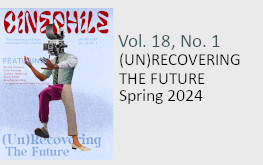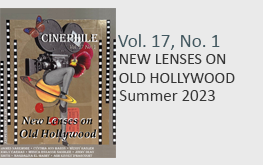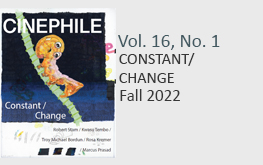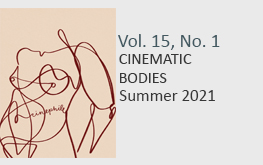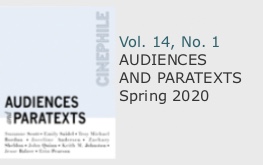Murray Pomerance
An undervalued and understudied film at best, Alfred Hitchcock’s Torn Curtain (1966) has gained its relatively small popular reputation largely on the basis of Paul Newman and Julie Andrews’s presence as (according to some dissatisfied reviewers, incompetent) star performers, and has attracted marginal scholarly attention as a ‘cold war’ story about American espionage, or pursuit, in Communist East Germany. Robin Wood, for example, sees it as a descent narrative, in which the hero, made vulnerable to dangers, sees “the need to commit himself completely to a woman” (200). Christopher Morris sees the film as an “allegory of the pursuit of the sign” (62). But film criticism and scholarship remain largely inoculated against serious considerations of dramaturgy and image construction, still fervently focused on the rather literary conceit of analyzing story content or language for its own sake-as metaphor, as mirror, or as evidence of an author’s obsession. The magnitude of Hitchcock’s genius has therefore been persistently overlooked, even by people who rave about him as a master. As William Rothman cannily suggests, “Part of what [Hitchcock] knew when he died is that America really never understood his films” (343).
In this film, Michael Armstrong (Newman), a senior professor of physics at some unspecified American college, and his graduate assistant Sarah Sherman (Andrews), find themselves at the University of Leipzig, where Armstrong, having defected to the Communist East Bloc, is apparently collaborating with the internationally acclaimed theorist Gustav Lindt (Ludwig Donath) on a secret rocket formula called “Gamma-5.” The defection and collaboration constitute a mask, however, since Armstrong is ‘in fact’ an agent of the Central Intelligence Agency, working against the clock to extract the vital formula from Lindt in order that the American military program might be saved from failure. Sherman, at first humiliated and revolted by her lover’s apparent treachery, falls even more deeply in love with him than ever when she discovers what he is ‘really’ trying to do. By the film’s end, the two are racing against German security forces to escape the country alive.
Woven throughout this ostensibly straightforward story, which I have dissected far more patiently in An Eye for Hitchcock, are numerous visual ‘motifs’ or ‘themes’, which many who write about this film take as decorative or metaphorical expressions of underlying meanings. A principal one of these is fire: the flame of Lindt’s cigar, the pathetic security guard Gromek’s (Wolfgang Kieling), faulty lighter that will not take flame no matter how hard he tries, the ‘flame’ of Armstrong’s intelligence and his love for Sarah, the ‘fire’ simulated onstage by a visiting Soviet ballet company en route to Sweden but giving a final performance in East Germany-with Armstrong and Sherman trapped in the audience-of Tchaikovsky’s “Francesca da Rimini,” the word “Fire!” screamed out by Armstrong from the midst of that audience as a way of creating the pandemonium through which he and his assistant will be able to escape, the fiery red hair of the ballet company’s stage manager, who helps in the escape, and so on.
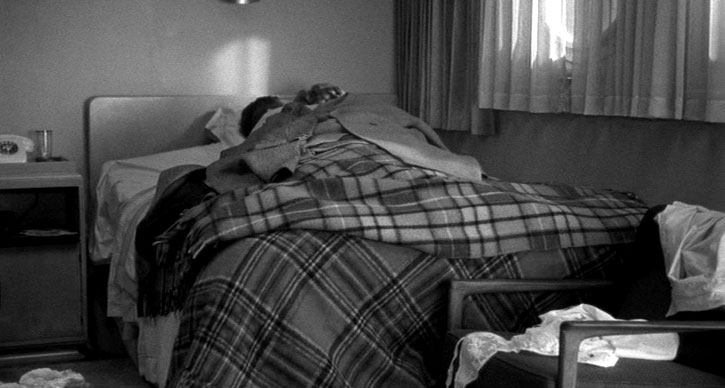
I want to focus on two particularly elaborate manifestations of this trope, which function together as a framing system for the film (since one comes at the beginning and the other at the end), in such a way as to set the stage for a question which I believe may be notably revealing about what Torn Curtain finally intends. In the opening sequence, we are aboard the M.S. Meteor, a touring vessel in the Norwegian Osterfjørd, along with numerous academics-Dr. Walter Keller of Princeton University and dozens of his peers-who are all traveling to Copenhagen for the International Conference of Physicists. For some unannounced reason, the heating system on this vessel has spectacularly failed, with the temperature on board plummeting to the freezing point, resulting in a set of conditions which daunt the courage of civilized (that is, highly educated and purportedly well socialized) mankind: gelid water in the drinking glasses at lunch, frozen energies and appetites, viscous movement and corresponding antipathy, chilly conversational climate, and an overwhelmingly incessant sense that physical and emotional warmth are out of the question, at the furthest remove, gone forever. These qualities of experience and condition are exemplified and magnified by a scenic design that for the most part favours cool greens and blues (mixed, as were all the paints used for the sets of the film, with gray [Henry Bumstead, personal communication]), a lighting strategy that employs arc lamps for simulated daylight (rather than warming tungsten), and a camera style that frames stationary shots, intercut rather like photographs in a magazine documentary or bureaucratic slide show-as though the conscious camera itself has been slowed to a halt by the pervasive cold.
When the conference migrates to the Hotel d’Angleterre in Copenhagen, things are immediately very different. Scholars are warm and even bubbly to one another, there is considerable movement of both persons and the frame, the woodier décor is brown-and golden-toned (thus, distinctly warmer), and the protagonists seem possessed of genuine motive and energy. Further, however, the chill of the sequence on the ship goes entirely unreferenced. The narrative does not look back from its presence in a warm climate to the unforgiving cold, either here or at any future point in the film.
The cold ship is a convenient locale for establishing the two central lovers in a position that is at once compromising and deeply informative. Michael and Sarah have invented their own ideal solution to the temperature crisis, and are discovered by the camera wrapped together in bed, under a pile of huge blankets. While their patter signals the audience about what they do professionally; what their relationship is to one another; and how, with respect to the binding commitment of matrimony, dominating Michael and infatuated Sarah do not precisely share views (“Breakfast comes before lunch,” says she, “and marriage should come before a honeymoon cruise,” to which he ripostes, “You’re on the wrong ship”-this in entertaining conformity to contemporary playful cinematic appraisals of bourgeois values in the early 1960s, such as, for example, Michael Gordon’s Pillow Talk [1959]). The physical depiction of the two physicists in bed with one another, not merely ‘warming up’ because the heat is off, but also actually warming up (erotically), suggests something about their basic attitudes toward the body and its social envelope. At the beginning of Torn Curtain, Michael and Sarah are each convinced of the self as container of a thermal core, some essential inner essence that has the capacity to store and radiate energy or purpose. Each person is a fire, in other words, and can exude sufficient heat to warm a colleague beneath a blanket. The function of that blanket is to trap and isolate the therapeutic substance that is naturally, spontaneously exuded by one’s self and one’s friend. A more general way to see this is that motive and cause come from the wells of the self.
Not long before this film was released, the classicist Norman O. Brown had given a Phi Beta Kappa talk at Columbia University, and soon later published in Harpers, the blazing essay, “Apocalypse: The Place of Mystery in the Life of the Mind,” in which he quoted the specifications for the final examination in the course on Internal Heat at the College of Magic Ritual in Tibet:
Candidates assemble naked, in midwinter, at night, on a frozen Himalayan lake. Beside each one is placed a pile of wet frozen undershirts: the assignment is to wear, until they are dry, as many as possible of these undershirts before dawn. Where the power is real, the test is real, and the grading system dumbfoundingly objective. (5)
“The power I look for,” said Brown, “is the power of enthusiasm: as condemned by John Locke; as possessed by George Fox, the Quaker […] to whom, as a matter of fact, was even given the magic internal heat-‘The fire of the Lord was so in my feet, and all around me, that I did not matter to put on my shoes any more'” (6). Here, at any rate, was an ample supply of the kind of Eastern philosophy that titillated audiences, academic and not, in the early days of the 1960s, a locus of fascinations such as Michael and his ardent protégée could well have enjoyed. It was an era in which excursions into, and refinements of the self were taken as culturally valid, even paramount.
What seems central to me about the episode with the blankets, then, is its clear signal that Michael and Sarah, perhaps each in a different way, ‘has it’. They are self-reliantly brilliant, moving ahead in their own careers, purposive, capable, sophisticated, and endowed, in themselves, with the powers of extension, recuperation, drive, navigation, reflection, and so on. So it is that-as yet innocent of his deeper motives-we soon accept Michael’s defection to the East as motivated by his (perhaps questionable) personal desires and alignments, and that we come to understand Sarah’s seeing it this way, too. So it is that even when Michael confides to Sarah that he is on a mission (thus seducing her love and loyalty forever), it can seem to us (and, of course, to her) that his actions are the plain result of an exercise of will on his part. What he does, therefore, indicates what he intends. And climactically, Michael’s deft little exercise with Lindt in the professor’s basement lekturverein, that holy sanctuary of which the door may remain unlocked because nobody who walks in can understand the formulae they read there, can seem, all through its progress and in its explosive conclusion as Lindt betrays his formula to the foreign stranger who had been masquerading as a hungry student, to be Michael’s personal triumph. Michael’s performing skills (put up, brilliantly here, by Paul Newman’s performing skills), Michael’s sharp intelligence and quick reaction, Michael’s avowed democratic purpose and American patriotism, in short, Michael himself is the force that draws the ‘truth’ from its secret vault in Lindt’s defensive brain. As Michael warms Sarah, as Michael from within his embodied person draws up the energies and focus to rectify the heating problem on the ship, so later on Michael with his powers mobilizes the events that comprise the plot, and Michael with his powers (assisted most capably by Sarah, with hers) brings about the happy ending.

It is easy enough to read self-reliance, will, and the motivated personality as sources of action, all through the film. To jump a little: the star ballerina in that culminating performance (Tamara Toumanova) is a card-carrying Communist who wants to catch the fleeing “Amerikanische spionen” who are buried in some of the costume baskets on the freighter Westgall that she and the company are taking to Sweden; when she thinks she has seen them, and calls out for the officers on board to shoot (which they do), it is out of personal motive, we may think, or political sensibility turned personal, that she acts. She is hateful, vengeful, indeed filled with spite; and much earlier, when Armstrong’s plane landed him in East Berlin, we learned why: she was in a seat near to his, but as she stepped onto the gangway, and posed dramatically for the bevy of hungry photographers, it was the defecting American they turned out to be waiting for, not her, and, diva that she was, the ballerina was reduced on the spot to the humiliating lowness of an utter nobody. The cheery thug Gromek attempts to bond with Armstrong, we may imagine, not because he is a flunkie of the East German security service who must do what he is told, but because he desires to make the American’s acquaintance, since with Armstrong he can perhaps reminisce about Pete’s Pizza at 88th and 8th in New York, where once he was happy. The mad professor Lindt has been working zealously on his “Gamma-5” formula not, apparently, because he occupies a structured role in a state-controlled bureaucracy but out of a more personal motive, pure fascination for micro-particles or delight in the ravenous graduate students seeking nourishment from his scintillations of wisdom. Lindt, like Armstrong, is thus self-motivated. The utterly pathetic Countess Kuchinska (Lila Kedrova), who accidentally runs into the fleeing Sarah and Michael and agrees to help them get out of Germany if they will but sponsor her to the United States of America, acts as she does not because of the press of social forces and pumped up expectations that play upon her, given her residual class status, but because she is obsessively driven, one could say insanely focused on the American dream.
At the end of the film, we find Michael and Sarah blanketed once more, but in a wholly different situation. Having safely jumped the freighter in the Swedish harbour, the two now emerge sopping wet in front of welcoming Swedish authorities, who immediately usher them into a little cabin and provide them with a bonfire. The film ends as we share the perspective of a particularly eager press photographer who wants just one (last) picture, and who has climbed up so that he can watch them through a transom. When they notice him, Michael and Sarah draw their gray woolen blankets together to make a screen which will block his (and our) view. But as the two spies are huddled together, cold and wet in front of a fireplace, it is the crackling flames that are giving them succour, the objective outside source, not a well of internal heat. In one sense the culmination of the so-called ‘fire motif’, then, this scene also closes the film by suggesting one particular, even provocative, additional fire that contributes to the plot.
And this question must be asked: given that, as popular reception would have it, Torn Curtain is about espionage and intelligence, or that it is about love; given that the relationship between Michael and Sarah is established succinctly while they are in Copenhagen and then developed beautifully when he ‘defects’ (and she follows him) to East Berlin; given that their passion for one another is perfectly evident in its many stages in Denmark, in Germany, and then on the dock in Sweden; given that we may watch their actual espionage from an admirable (indeed, from an ideal) viewpoint; and given that our spies get away successfully; why is it necessary for Hitchcock to bracket, or frame it all with two sequences involving, of all things, the production of heat? (Why do we need the chilly ship at all?) In the first, with shivers all around them, our lovers demonstrate ‘internal heat’. In the second, when they are no longer warm themselves but shivering, they are offered the benefits of a bonfire. Whether or not we find the ‘flame’ theme important as a heuristic figure, surely it is developed sufficiently throughout the film not to require these two bracketing scenes, which do no more than demonstrate the protagonists’ caloric relation to the world. That is: without Michael and Sarah either ‘being hot’ or ‘needing heat’, we can see a story ‘heating up’ and even ‘reaching its boiling point’ without the parenthetical system Hitchcock has put in place. I think a serious reflection on the finale might help us see-if still, in the wake of the considerable scholarship about him, we need to see-how Hitchcock was no decorator, and how these framing sequences were not frivolous additions to a relatively insignificant film.
What Michael and Sarah learn and demonstrate, simultaneously, in the finale is exactly that motive does not come from will at all, or, to speak by way of the metaphor of ‘fire’, heat is not-or not simply-internal. Just as Lindt’s brilliance is a response to state dictatorship; and as Countess Kuchinska’s urgency is a response to the abjectness of her living conditions (and also to her expectations); and as Gromek’s interest in Michael comes at least in part from his boredom with his job, not just Michael’s attractiveness; so, here, Michael and Sarah are shown to be finally, existentially, incomplete, which is to say, not the perfect heroes at all. They must rely on what is outside them for help. They must escape the arrogance of their own ego positions and accept that life is complex business involving relations with, help from, and negotiation against others. Indeed, to bring this point home Hitchcock shows clearly that Michael and Sarah are couched inside separate blankets (and separate blankets hardly because the tolerant Swedish authorities have been prurient with this rather obvious twosome that has been born, dripping, from their harbour). The narcissistic dream of incorporation which helped fuel their earlier tryst has evaporated in the torn light of political contingency and danger. It is not merely that Michael must find the help of a woman, as Wood has it, but that he must recognize she is not already his creation, not already within himself. The future for each of these persons, after this moment of spectacular growth, will be more problematic still, and also more exciting: they will have moved from projectors to contractors, from expecting a world that conforms to their inner desires to recognizing an otherness that must be approached, reached out to, touched.
In much the same way, by 1966, with the Cuban missile crisis and the Bay of Pigs all untidily resolved, with a dead President in its wake, America in general had lost its sheen of individualistic self-assured glory and gained entrance to a global culture where connections and advantages had to be argued for, relations had to be built, intelligence, to be truly bright, had to be shared, and warmth had to come from beyond one’s skin.
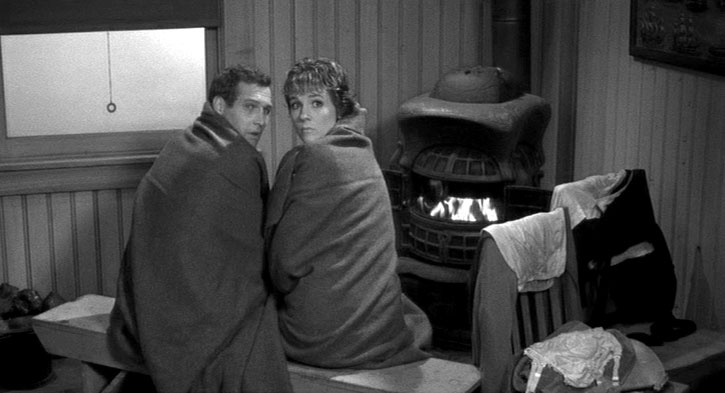
Works Cited
Brown, Norman O. “Apocalypse: The Place of Mystery in the Life of the Mind.” Harpers Magazine May 1961: 46-49; reprinted in Apocalypse and/or Metamorphosis. Berkeley: University of California Press, 1991. 1-7.
Morris, Christopher D. “Torn Curtain‘s Futile Talk.” Cinema Journal 39.1 (1999): 54-73.
Pomerance, Murray. An Eye for Hitchcock. New Brunswick NJ: Rutgers University Press, 2004.
Rothman, William. Hitchcock-The Murderous Gaze. Cambridge MA: Harvard University Press, 1982.
Wood, Robin. Hitchcock’s Films Revisited. Revised edition. New York: Columbia University Press, 2002.


